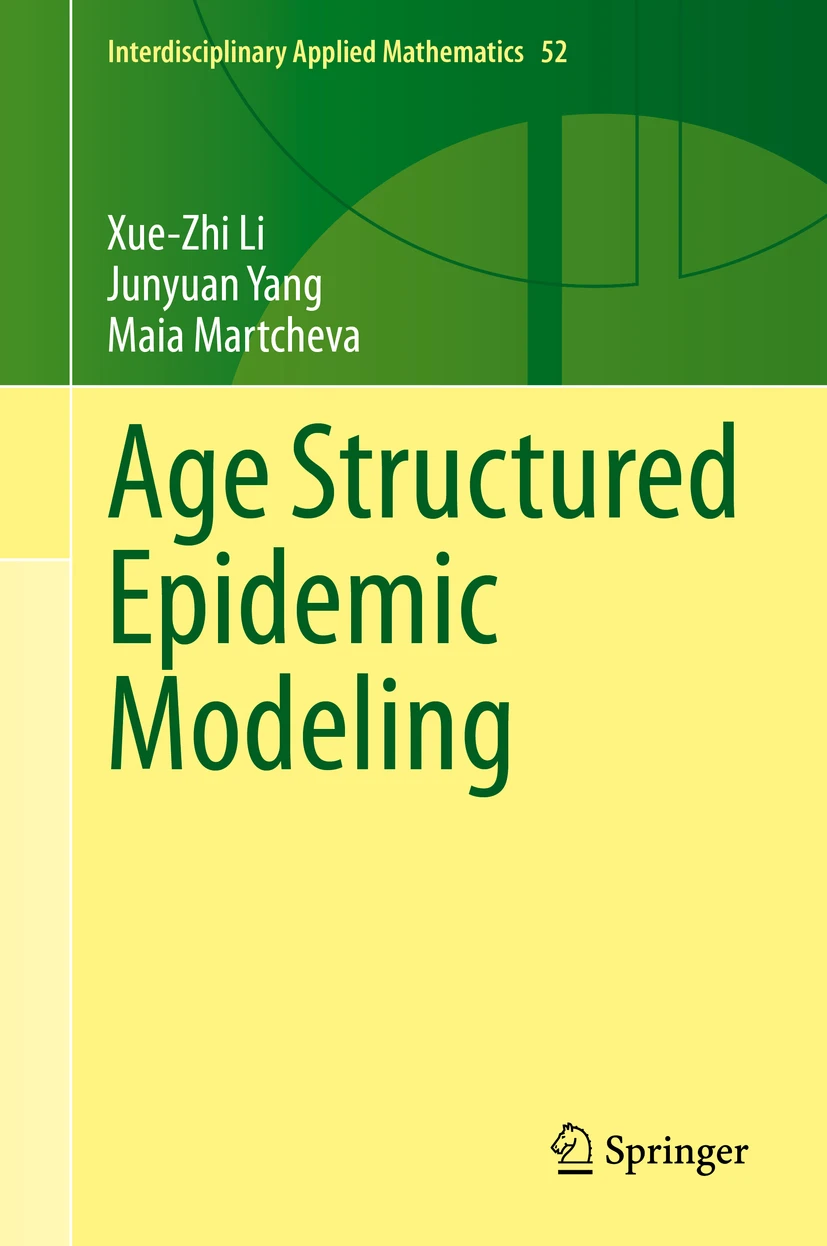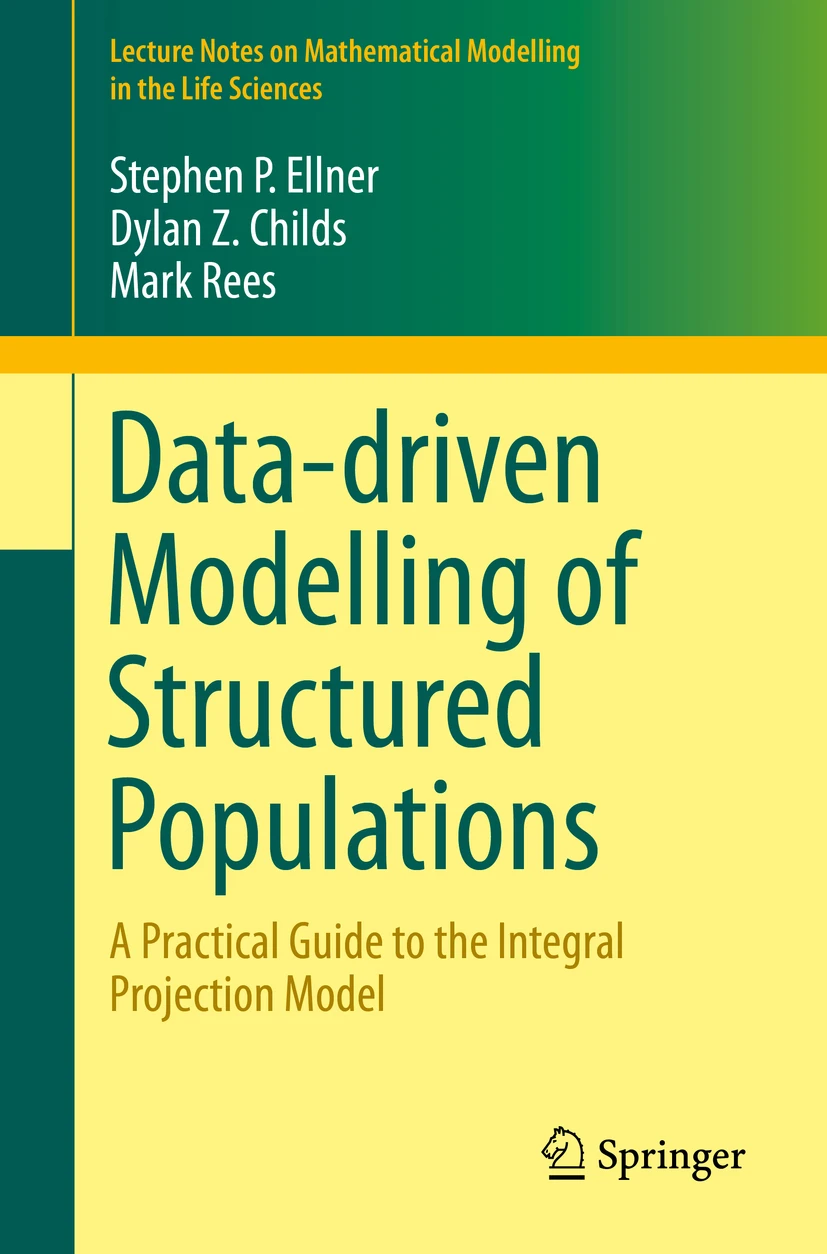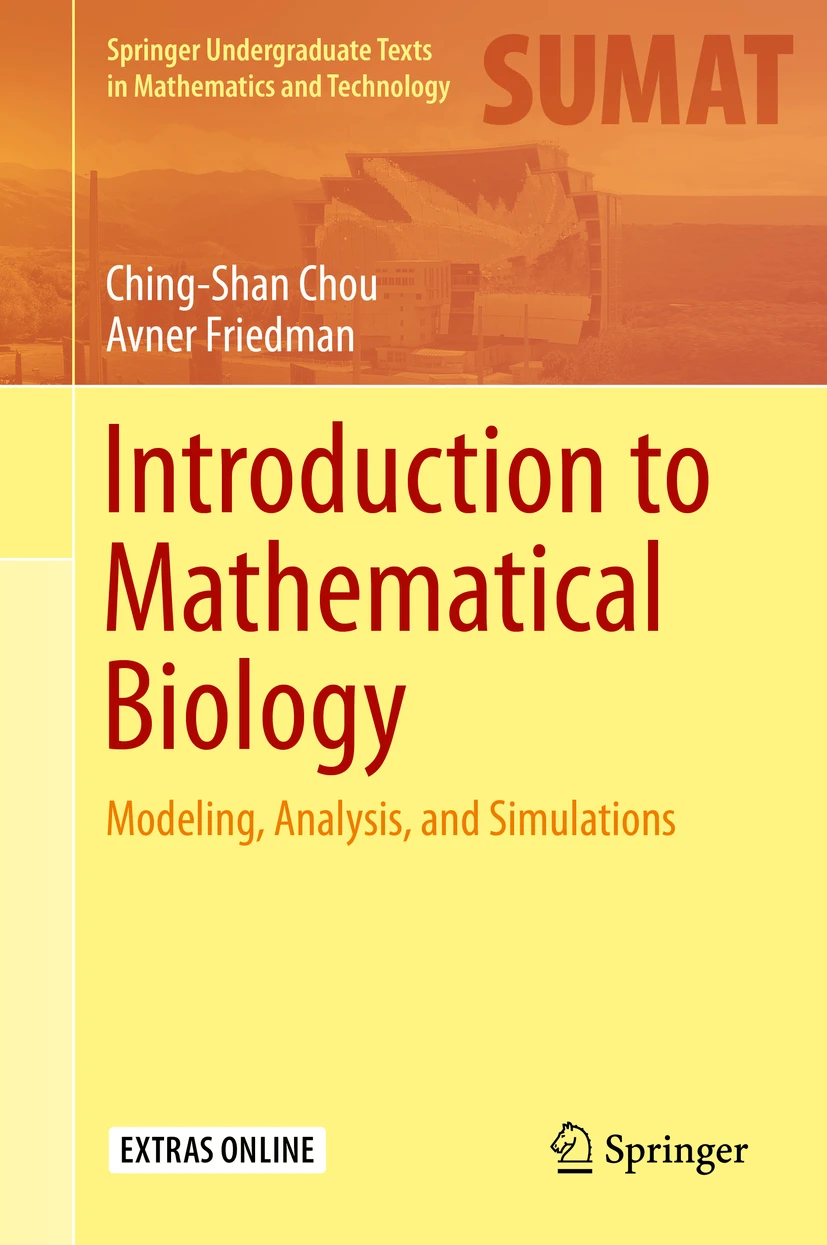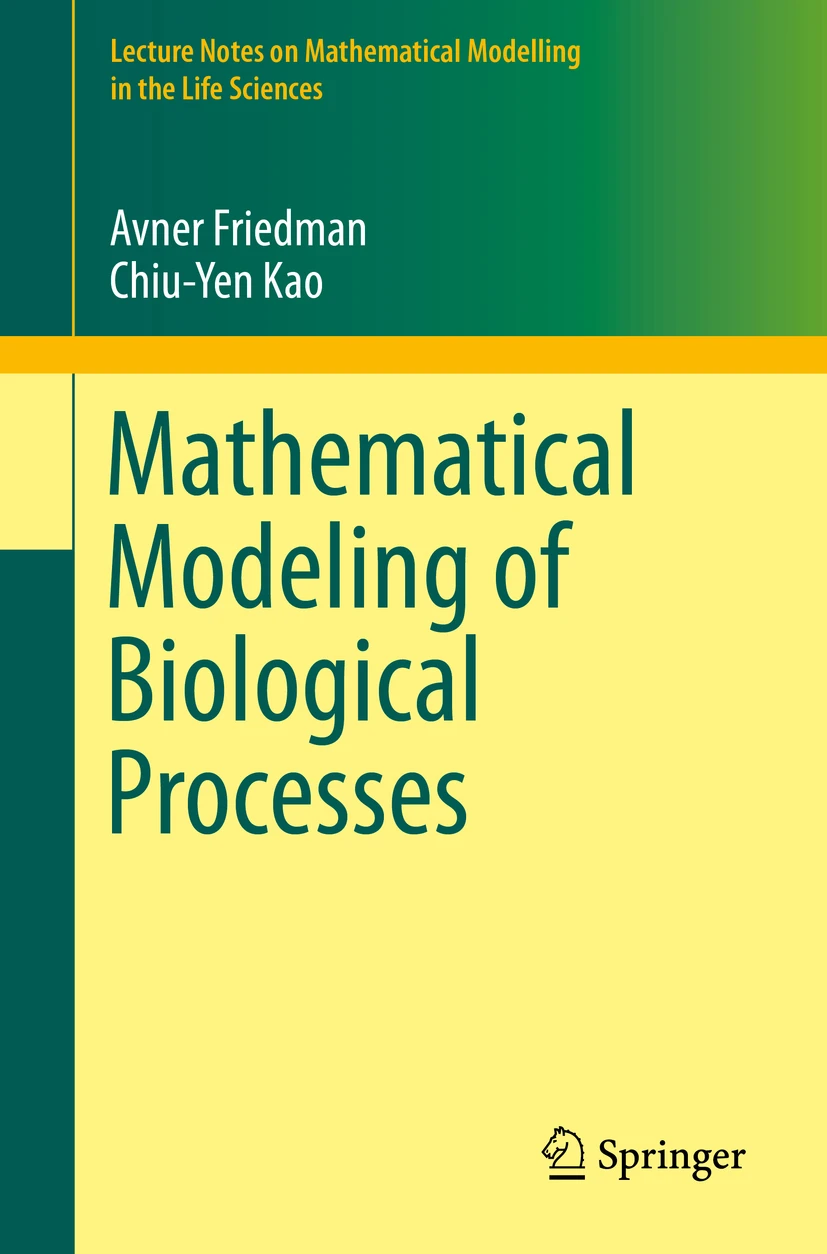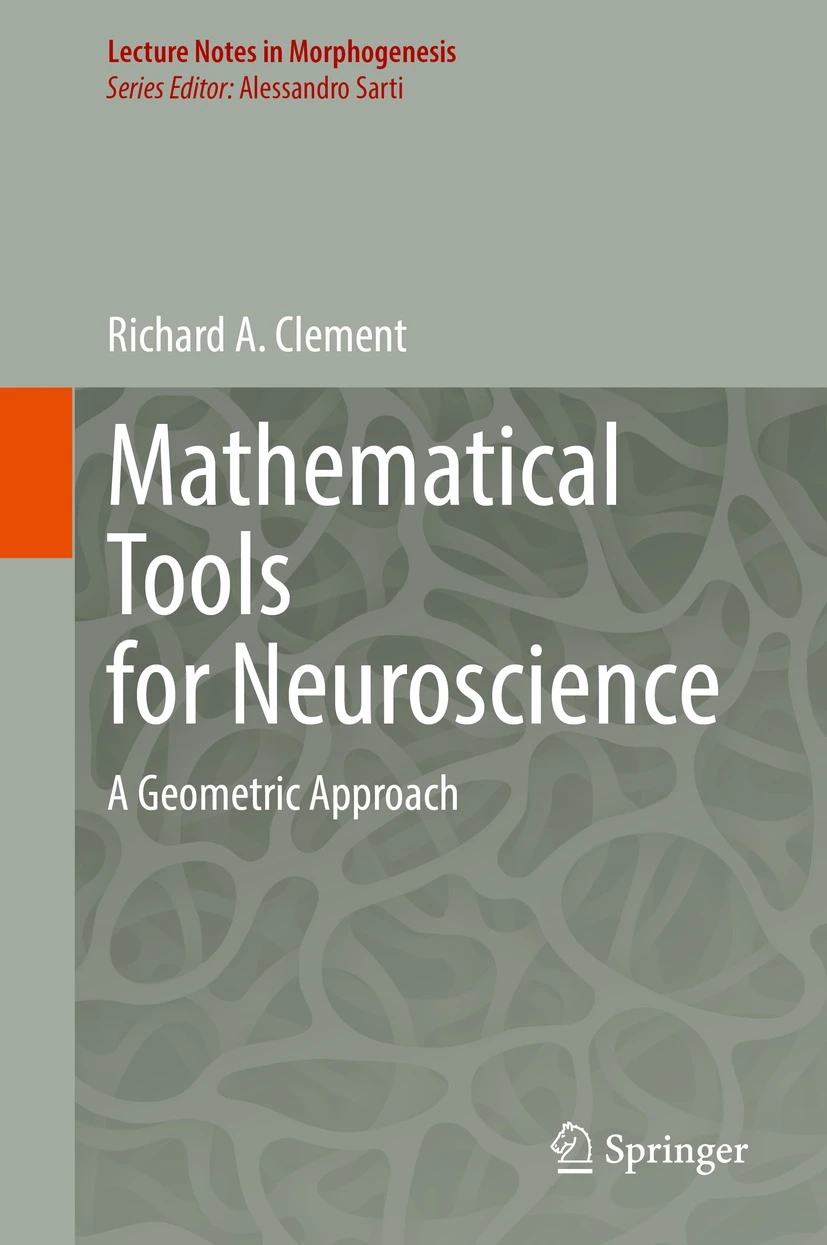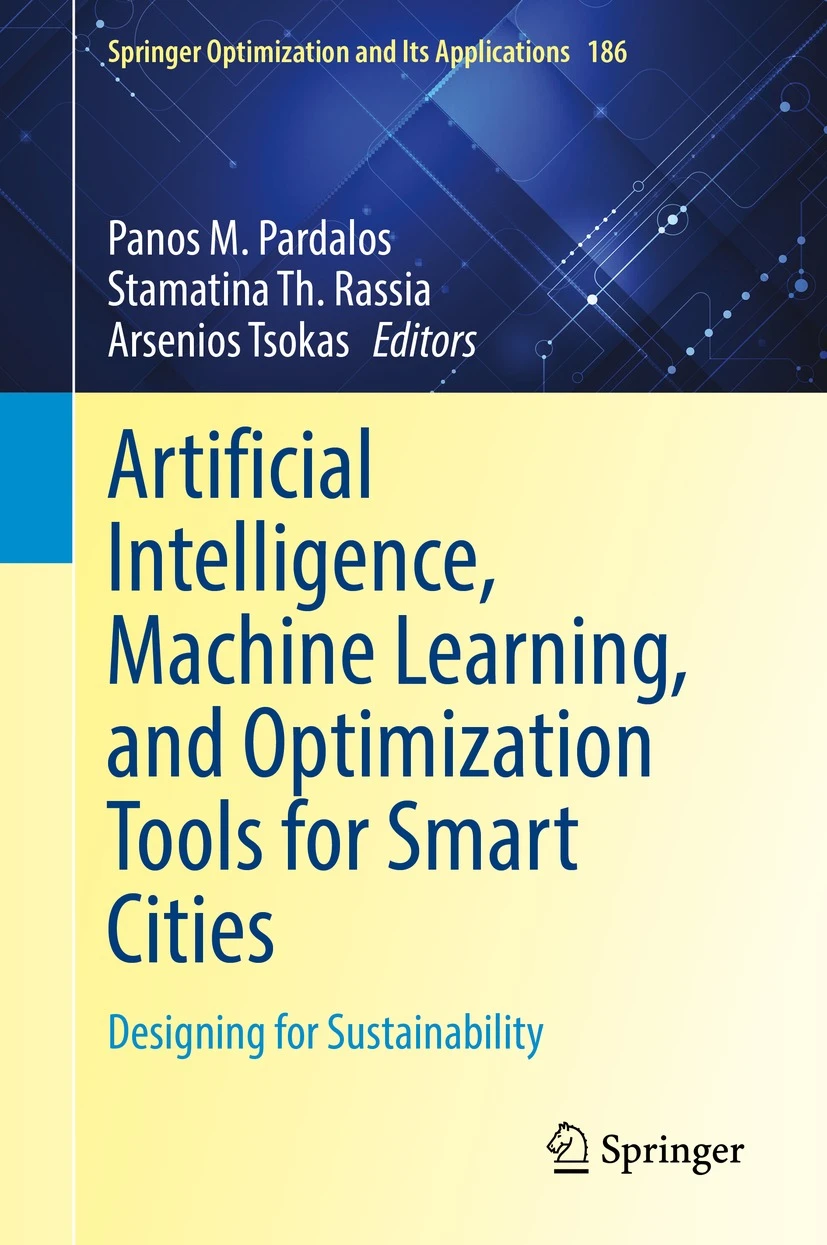-20%
Age Structured Epidemic Modeling
Original price was: ₹ 10,460.00.₹ 8,368.00Current price is: ₹ 8,368.00.
This book introduces advanced mathematical methods and techniques for analysis and simulation of models in mathematical epidemiology. Chronological age and class-age play an important role in the description of infectious diseases and this text provides the tools for the analysis of this type of partial differential equation models. This book presents general theoretical tools as well as large number of specific examples to guide the reader to develop their own tools that they may then apply to study structured models in mathematical epidemiology. The book will be a valuable addition to the arsenal of all researchers interested in developing theory or studying specific models with age structure.
-20%
Age Structured Epidemic Modeling
Original price was: ₹ 10,460.00.₹ 8,368.00Current price is: ₹ 8,368.00.
This book introduces advanced mathematical methods and techniques for analysis and simulation of models in mathematical epidemiology. Chronological age and class-age play an important role in the description of infectious diseases and this text provides the tools for the analysis of this type of partial differential equation models. This book presents general theoretical tools as well as large number of specific examples to guide the reader to develop their own tools that they may then apply to study structured models in mathematical epidemiology. The book will be a valuable addition to the arsenal of all researchers interested in developing theory or studying specific models with age structure.
-20%
Age Structured Epidemic Modeling
Original price was: ₹ 10,460.00.₹ 8,368.00Current price is: ₹ 8,368.00.
This book introduces advanced mathematical methods and techniques for analysis and simulation of models in mathematical epidemiology. Chronological age and class-age play an important role in the description of infectious diseases and this text provides the tools for the analysis of this type of partial differential equation models. This book presents general theoretical tools as well as large number of specific examples to guide the reader to develop their own tools that they may then apply to study structured models in mathematical epidemiology. The book will be a valuable addition to the arsenal of all researchers interested in developing theory or studying specific models with age structure.
-20%
Age Structured Epidemic Modeling
Original price was: ₹ 10,460.00.₹ 8,368.00Current price is: ₹ 8,368.00.
This book introduces advanced mathematical methods and techniques for analysis and simulation of models in mathematical epidemiology. Chronological age and class-age play an important role in the description of infectious diseases and this text provides the tools for the analysis of this type of partial differential equation models. This book presents general theoretical tools as well as large number of specific examples to guide the reader to develop their own tools that they may then apply to study structured models in mathematical epidemiology. The book will be a valuable addition to the arsenal of all researchers interested in developing theory or studying specific models with age structure.
-20%
Biological Models via Interval Type-2 Fuzzy Sets
Original price was: ₹ 5,705.00.₹ 4,564.00Current price is: ₹ 4,564.00.
This book offers a gentle introduction to type-2 fuzzy sets and, in particular, interval type-2 fuzzy sets and their application in biological modeling. Interval type-2 fuzzy modeling is a comparatively recent direction of research in fuzzy modeling. As the modeling of biological problems is inherently uncertain, the use of fuzzy sets in this field is a natural choice. The coverage begins with a succinct review of type-1 fuzzy basic theory, before providing a comprehensive and didactic explanation of type-2 fuzzy set components. In turn, Fuzzy Rule-Based Systems, or FRBS, are shown for both types, interval type-2 and type-1 fuzzy sets. Applications include the pharmacological models, prediction of prostate cancer stages, a model for HIV population transfer (asymptomatic to symptomatic), an epidemiological disease caused by HIV, some models in population growth, included the Malthus Model, and an epidemic model refers to COVID-19. The book is ideally suited to graduate students in mathematics and related fields, professionals, researchers, or the public interested in interval type-2 fuzzy modeling. Largely self-contained, it can also be used as a supplementary text in specialized graduate courses.
-20%
Biological Models via Interval Type-2 Fuzzy Sets
Original price was: ₹ 5,705.00.₹ 4,564.00Current price is: ₹ 4,564.00.
This book offers a gentle introduction to type-2 fuzzy sets and, in particular, interval type-2 fuzzy sets and their application in biological modeling. Interval type-2 fuzzy modeling is a comparatively recent direction of research in fuzzy modeling. As the modeling of biological problems is inherently uncertain, the use of fuzzy sets in this field is a natural choice. The coverage begins with a succinct review of type-1 fuzzy basic theory, before providing a comprehensive and didactic explanation of type-2 fuzzy set components. In turn, Fuzzy Rule-Based Systems, or FRBS, are shown for both types, interval type-2 and type-1 fuzzy sets. Applications include the pharmacological models, prediction of prostate cancer stages, a model for HIV population transfer (asymptomatic to symptomatic), an epidemiological disease caused by HIV, some models in population growth, included the Malthus Model, and an epidemic model refers to COVID-19. The book is ideally suited to graduate students in mathematics and related fields, professionals, researchers, or the public interested in interval type-2 fuzzy modeling. Largely self-contained, it can also be used as a supplementary text in specialized graduate courses.
-21%
Data-driven Modelling of Structured Populations
Original price was: ₹ 6,181.00.₹ 4,944.00Current price is: ₹ 4,944.00.
This book is a “How To” guide for modeling population dynamics using Integral Projection Models (IPM) starting from observational data. It is written by a leading research team in this area and includes code in the R language (in the text and online) to carry out all computations. The intended audience are ecologists, evolutionary biologists, and mathematical biologists interested in developing data-driven models for animal and plant populations. IPMs may seem hard as they involve integrals. The aim of this book is to demystify IPMs, so they become the model of choice for populations structured by size or other continuously varying traits. The book uses real examples of increasing complexity to show how the life-cycle of the study organism naturally leads to the appropriate statistical analysis, which leads directly to the IPM itself. A wide range of model types and analyses are presented, including model construction, computational methods, and the underlying theory, with the more technical material in Boxes and Appendices. Self-contained R code which replicates all of the figures and calculations within the text is available to readers on GitHub.Stephen P. Ellner is Horace White Professor of Ecology and Evolutionary Biology at Cornell University, USA; Dylan Z. Childs is Lecturer and NERC Postdoctoral Fellow in the Department of Animal and Plant Sciences at The University of Sheffield, UK; Mark Rees is Professor in the Department of Animal and Plant Sciences at The University of Sheffield, UK.
-21%
Data-driven Modelling of Structured Populations
Original price was: ₹ 6,181.00.₹ 4,944.00Current price is: ₹ 4,944.00.
This book is a “How To” guide for modeling population dynamics using Integral Projection Models (IPM) starting from observational data. It is written by a leading research team in this area and includes code in the R language (in the text and online) to carry out all computations. The intended audience are ecologists, evolutionary biologists, and mathematical biologists interested in developing data-driven models for animal and plant populations. IPMs may seem hard as they involve integrals. The aim of this book is to demystify IPMs, so they become the model of choice for populations structured by size or other continuously varying traits. The book uses real examples of increasing complexity to show how the life-cycle of the study organism naturally leads to the appropriate statistical analysis, which leads directly to the IPM itself. A wide range of model types and analyses are presented, including model construction, computational methods, and the underlying theory, with the more technical material in Boxes and Appendices. Self-contained R code which replicates all of the figures and calculations within the text is available to readers on GitHub.Stephen P. Ellner is Horace White Professor of Ecology and Evolutionary Biology at Cornell University, USA; Dylan Z. Childs is Lecturer and NERC Postdoctoral Fellow in the Department of Animal and Plant Sciences at The University of Sheffield, UK; Mark Rees is Professor in the Department of Animal and Plant Sciences at The University of Sheffield, UK.
-21%
Introduction to Mathematical Biology
Original price was: ₹ 4,754.00.₹ 3,803.00Current price is: ₹ 3,803.00.
This book is based on a one semester course that the authors have been teaching for several years, and includes two sets of case studies.The first includes chemostat models, predator-prey interaction, competition among species, the spread of infectious diseases, and oscillations arising from bifurcations. In developing these topics, readers will also be introduced to the basic theory of ordinary differential equations, and how to work with MATLAB without having any prior programming experience.
The second set of case studies were adapted from recent and current research papers to the level of the students. Topics have been selected based on public health interest.This includes the risk of atherosclerosis associated with high cholesterol levels, cancer and immune interactions, cancer therapy, and tuberculosis. Readers will experience how mathematical models and their numerical simulations can provide explanations that guide biological and biomedical research.
Considered to be the undergraduate companion to the more advanced book 'Mathematical Modeling of Biological Processes' (A. Friedman, C.-Y. Kao, Springer – 2014), this book is geared towards undergraduate students with little background in mathematics and no biological background.
-21%
Introduction to Mathematical Biology
Original price was: ₹ 4,754.00.₹ 3,803.00Current price is: ₹ 3,803.00.
This book is based on a one semester course that the authors have been teaching for several years, and includes two sets of case studies.The first includes chemostat models, predator-prey interaction, competition among species, the spread of infectious diseases, and oscillations arising from bifurcations. In developing these topics, readers will also be introduced to the basic theory of ordinary differential equations, and how to work with MATLAB without having any prior programming experience.
The second set of case studies were adapted from recent and current research papers to the level of the students. Topics have been selected based on public health interest.This includes the risk of atherosclerosis associated with high cholesterol levels, cancer and immune interactions, cancer therapy, and tuberculosis. Readers will experience how mathematical models and their numerical simulations can provide explanations that guide biological and biomedical research.
Considered to be the undergraduate companion to the more advanced book 'Mathematical Modeling of Biological Processes' (A. Friedman, C.-Y. Kao, Springer – 2014), this book is geared towards undergraduate students with little background in mathematics and no biological background.
-21%
Introduction to Mathematical Biology
Original price was: ₹ 4,754.00.₹ 3,803.00Current price is: ₹ 3,803.00.
This book is based on a one semester course that the authors have been teaching for several years, and includes two sets of case studies.The first includes chemostat models, predator-prey interaction, competition among species, the spread of infectious diseases, and oscillations arising from bifurcations. In developing these topics, readers will also be introduced to the basic theory of ordinary differential equations, and how to work with MATLAB without having any prior programming experience.
The second set of case studies were adapted from recent and current research papers to the level of the students. Topics have been selected based on public health interest.This includes the risk of atherosclerosis associated with high cholesterol levels, cancer and immune interactions, cancer therapy, and tuberculosis. Readers will experience how mathematical models and their numerical simulations can provide explanations that guide biological and biomedical research.
Considered to be the undergraduate companion to the more advanced book 'Mathematical Modeling of Biological Processes' (A. Friedman, C.-Y. Kao, Springer – 2014), this book is geared towards undergraduate students with little background in mathematics and no biological background.
-21%
Introduction to Mathematical Biology
Original price was: ₹ 4,754.00.₹ 3,803.00Current price is: ₹ 3,803.00.
This book is based on a one semester course that the authors have been teaching for several years, and includes two sets of case studies.The first includes chemostat models, predator-prey interaction, competition among species, the spread of infectious diseases, and oscillations arising from bifurcations. In developing these topics, readers will also be introduced to the basic theory of ordinary differential equations, and how to work with MATLAB without having any prior programming experience.
The second set of case studies were adapted from recent and current research papers to the level of the students. Topics have been selected based on public health interest.This includes the risk of atherosclerosis associated with high cholesterol levels, cancer and immune interactions, cancer therapy, and tuberculosis. Readers will experience how mathematical models and their numerical simulations can provide explanations that guide biological and biomedical research.
Considered to be the undergraduate companion to the more advanced book 'Mathematical Modeling of Biological Processes' (A. Friedman, C.-Y. Kao, Springer – 2014), this book is geared towards undergraduate students with little background in mathematics and no biological background.
-21%
Mathematical Methods for Cancer Evolution
Original price was: ₹ 8,083.00.₹ 6,466.00Current price is: ₹ 6,466.00.
The purpose of this monograph is to describe recent developments in mathematical modeling and mathematical analysis of certain problems arising from cell biology. Cancer cells and their growth via several stages are of particular interest. To describe these events, multi-scale models are applied, involving continuously distributed environment variables and several components related to particles. Hybrid simulations are also carried out, using discretization of environment variables and the Monte Carlo method for the principal particle variables. Rigorous mathematical foundations are the bases of these tools.The monograph is composed of four chapters. The first three chapters are concerned with modeling, while the last one is devoted to mathematical analysis. The first chapter deals with molecular dynamics occurring at the early stage of cancer invasion. A pathway network model based on a biological scenario is constructed, and then its mathematical structures are determined. In the second chapter mathematical modeling is introduced, overviewing several biological insights, using partial differential equations. Transport and gradient are the main factors, and several models are introduced including the Keller?Segel systems. The third chapter treats the method of averaging to model the movement of particles, based on mean field theories, employing deterministic and stochastic approaches. Then appropriate parameters for stochastic simulations are examined. The segment model is finally proposed as an application. In the fourth chapter, thermodynamic features of these models and how these structures are applied in mathematical analysis are examined, that is, negative chemotaxis, parabolic systems with non-local term accounting for chemical reactions, mass-conservative reaction-diffusion systems, and competitive systems of chemotaxis. The monograph concludes with the method of the weak scaling limit applied to the Smoluchowski?Poisson equation.
-21%
Mathematical Methods for Cancer Evolution
Original price was: ₹ 8,083.00.₹ 6,466.00Current price is: ₹ 6,466.00.
The purpose of this monograph is to describe recent developments in mathematical modeling and mathematical analysis of certain problems arising from cell biology. Cancer cells and their growth via several stages are of particular interest. To describe these events, multi-scale models are applied, involving continuously distributed environment variables and several components related to particles. Hybrid simulations are also carried out, using discretization of environment variables and the Monte Carlo method for the principal particle variables. Rigorous mathematical foundations are the bases of these tools.The monograph is composed of four chapters. The first three chapters are concerned with modeling, while the last one is devoted to mathematical analysis. The first chapter deals with molecular dynamics occurring at the early stage of cancer invasion. A pathway network model based on a biological scenario is constructed, and then its mathematical structures are determined. In the second chapter mathematical modeling is introduced, overviewing several biological insights, using partial differential equations. Transport and gradient are the main factors, and several models are introduced including the Keller?Segel systems. The third chapter treats the method of averaging to model the movement of particles, based on mean field theories, employing deterministic and stochastic approaches. Then appropriate parameters for stochastic simulations are examined. The segment model is finally proposed as an application. In the fourth chapter, thermodynamic features of these models and how these structures are applied in mathematical analysis are examined, that is, negative chemotaxis, parabolic systems with non-local term accounting for chemical reactions, mass-conservative reaction-diffusion systems, and competitive systems of chemotaxis. The monograph concludes with the method of the weak scaling limit applied to the Smoluchowski?Poisson equation.
-21%
Mathematical Modeling of Biological Processes
Original price was: ₹ 4,279.00.₹ 3,423.00Current price is: ₹ 3,423.00.
This book on mathematical modeling of biological processes includes a wide selection of biological topics that demonstrate the power of mathematics and computational codes in setting up biological processes with a rigorous and predictive framework. Topics include: enzyme dynamics, spread of disease, harvesting bacteria, competition among live species, neuronal oscillations, transport of neurofilaments in axon, cancer and cancer therapy, and granulomas. Complete with a description of the biological background and biological question that requires the use of mathematics, this book is developed for graduate students and advanced undergraduate students with only basic knowledge of ordinary differential equations and partial differential equations; background in biology is not required. Students will gain knowledge on how to program with MATLAB without previous programming experience and how to use codes in order to test biological hypothesis.
-21%
Mathematical Modeling of Biological Processes
Original price was: ₹ 4,279.00.₹ 3,423.00Current price is: ₹ 3,423.00.
This book on mathematical modeling of biological processes includes a wide selection of biological topics that demonstrate the power of mathematics and computational codes in setting up biological processes with a rigorous and predictive framework. Topics include: enzyme dynamics, spread of disease, harvesting bacteria, competition among live species, neuronal oscillations, transport of neurofilaments in axon, cancer and cancer therapy, and granulomas. Complete with a description of the biological background and biological question that requires the use of mathematics, this book is developed for graduate students and advanced undergraduate students with only basic knowledge of ordinary differential equations and partial differential equations; background in biology is not required. Students will gain knowledge on how to program with MATLAB without previous programming experience and how to use codes in order to test biological hypothesis.
-20%
Mathematical Tools for Neuroscience
Original price was: ₹ 10,460.00.₹ 8,368.00Current price is: ₹ 8,368.00.
This book provides a brief but accessible introduction to a set of related, mathematical ideas that have proved useful in understanding the brain and behaviour. If you record the eye movements of a group of people watching a riverside scene then some will look at the river, some will look at the barge by the side of the river, some will look at the people on the bridge, and so on, but if a duck takes off then everybody will look at it. How come the brain is so adept at processing such biological objects? In this book it is shown that brains are especially suited to exploiting the geometric properties of such objects. Central to the geometric approach is the concept of a manifold, which extends the idea of a surface to many dimensions.The manifold can be specified by collections of n-dimensional data points or by the paths of a system through state space. Just as tangent planes can be used to analyse the local linear behaviour of points on a surface, so the extension to tangent spaces can be used to investigate the local linear behaviour of manifolds.The majority of the geometric techniques introduced are all about how to do things with tangent spaces.
Examples of the geometric approach to neuroscience include the analysis of colour and spatial vision measurements and the control of eye and arm movements. Additional examples are used to extend the applications of the approach and to show that it leads to new techniques for investigating neural systems. An advantage of following a geometric approach is that it is often possible to illustrate the concepts visually and all the descriptions of the examples are complemented by comprehensively captioned diagrams. The book is intended for a reader with an interest in neuroscience who may have been introduced to calculus in the past but is not aware of the many insights obtained by a geometric approach to the brain. Appendices contain brief reviews of the required background knowledge in neuroscience and calculus.
-20%
Mathematical Tools for Neuroscience
Original price was: ₹ 10,460.00.₹ 8,368.00Current price is: ₹ 8,368.00.
This book provides a brief but accessible introduction to a set of related, mathematical ideas that have proved useful in understanding the brain and behaviour. If you record the eye movements of a group of people watching a riverside scene then some will look at the river, some will look at the barge by the side of the river, some will look at the people on the bridge, and so on, but if a duck takes off then everybody will look at it. How come the brain is so adept at processing such biological objects? In this book it is shown that brains are especially suited to exploiting the geometric properties of such objects. Central to the geometric approach is the concept of a manifold, which extends the idea of a surface to many dimensions.The manifold can be specified by collections of n-dimensional data points or by the paths of a system through state space. Just as tangent planes can be used to analyse the local linear behaviour of points on a surface, so the extension to tangent spaces can be used to investigate the local linear behaviour of manifolds.The majority of the geometric techniques introduced are all about how to do things with tangent spaces.
Examples of the geometric approach to neuroscience include the analysis of colour and spatial vision measurements and the control of eye and arm movements. Additional examples are used to extend the applications of the approach and to show that it leads to new techniques for investigating neural systems. An advantage of following a geometric approach is that it is often possible to illustrate the concepts visually and all the descriptions of the examples are complemented by comprehensively captioned diagrams. The book is intended for a reader with an interest in neuroscience who may have been introduced to calculus in the past but is not aware of the many insights obtained by a geometric approach to the brain. Appendices contain brief reviews of the required background knowledge in neuroscience and calculus.

